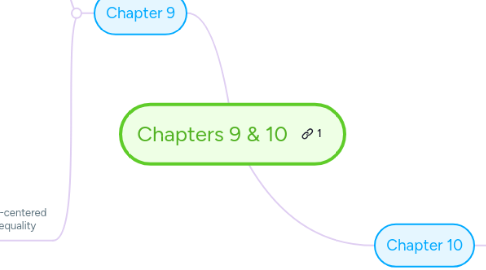
1. Chapter 9
1.1. 1.Explain atleast two of the cultural differences theory
1.1.1. Anthropologist John Ogbu stated that African American students don't do well in school because they become comfortable with surroundings. Families don't enourage African American students enough to put them in good positions for future careers or jobs. (Fordham & Ogbu, 1986) later suggest that school success requires that African American students deny their own cultural idneties and accept the dominant culture of the schools, which is white middle-class model. Basically they both are saying that African Americans are willing to side with another culture, rather than try to build up their own.
1.1.2. Second type of cultural difference theory sees working-class and non white students as resisting the dominant culture of the schools. Willis (1981) on working-class boys in England shows that these students explicitly reject middle class values and enthusiastically embrace a working class culture, which eschews the values of schooling. Students feel like if they don't belong then they refuse to do school work or come to school for that matter. Refusal to go to school leads to the work force at an early age.
1.2. 2. Describe at least four school-centered explanations for educational inequality
1.2.1. 1. School Financing- Public schools are financed through many different places such as local, state, and federal sources. In Serrano v. Priest (1971), the California Supreme Court ruled the system of unequal school financing between wealthy and poor districts unconstitutional.
2. Chapter 10
2.1. 1.Describe two school-based reforms (school-based, school-business partnerships, privatization, school-to-work programs, teacher education or teacher quality)
2.1.1. 1. School to work program- The purpose of this program was to continue what had been a vocational emphasis to non college bound students regarding skills necessary for successful employment and to stress the importance of work based learning. Even though the program had great intentions, according to( Charmer,1996;Mortimer,1996) it failed to live up to expectations.
2.1.2. 2. Privatization- This program was about public schools being taken over by the private schools due to the public schools failing. Philadelphia school system had to hire non profit companies to help get the school system back on track.
2.2. Chapter 10 2. Describe at least two societal, economic, community, or political reforms that impact education.
2.2.1. 1. Societal-According to (Bryk et al., 2010) the combination of school, community, and societal level reforms were needed to reduce the achievement gap. The support system of the reform consisted of : Leadership as the drive for change, parent-community ties, professional capacity, student centered learning climate, and instructional guidance.
2.2.2. Political- Emphasis on standards has defined educational problems narrowly, looking primarily on the intellectual and skills function of schooling to the exclusion of the social and psychological functions. While teaching students skills and knowledge they must be taught how to survive in society as an individual. Students have to be nurtured and cared for so they are put on the right path to succeed in the future.
